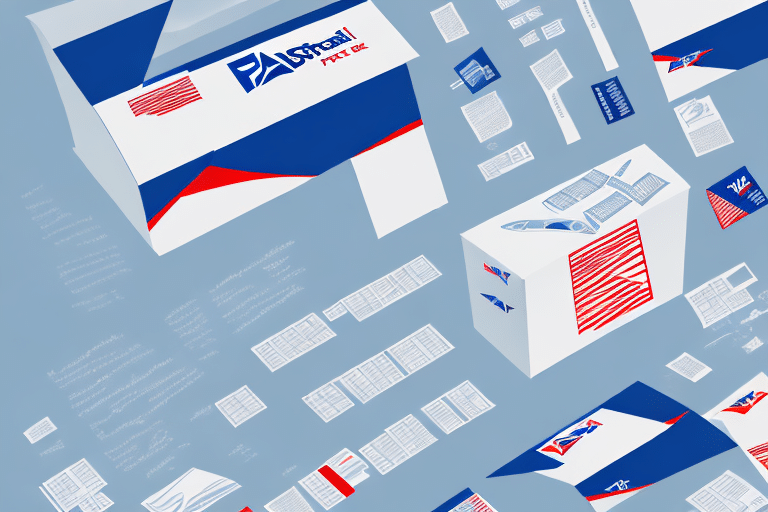Understanding the Insurance Costs of USPS Flat Rate Boxes
For businesses and individuals shipping items, comprehending the insurance costs associated with USPS Flat Rate Boxes is crucial. This knowledge enables informed decision-making and ensures protection of valuable shipments. This article explores USPS Flat Rate Boxes, their insurance coverage, and strategies to optimize shipping costs.
What Are USPS Flat Rate Boxes?
USPS Flat Rate Boxes are standardized shipping containers provided by the United States Postal Service, allowing senders to ship items at a fixed rate regardless of weight or distance. Available in various sizes, these boxes can be obtained for free at any post office or ordered online from the USPS website. This eliminates the need for precise weighing and measuring, saving both time and money.
One significant advantage is the predictability of shipping costs, which is beneficial for businesses that ship frequently and need to budget accordingly. However, it's essential to be aware of restrictions, such as prohibitions on hazardous materials and weight limits, to ensure compliance and cost-effectiveness.
Differences Between Flat Rate and Regular Shipping Boxes
The primary distinction between USPS Flat Rate Boxes and regular shipping boxes lies in their pricing structure. Flat Rate Boxes offer a consistent shipping price regardless of the package's weight or destination, making them ideal for heavy or long-distance shipments. In contrast, regular shipping boxes are priced based on weight and distance, which can lead to higher costs for heavier or more distant deliveries.
Additionally, Flat Rate Boxes come in multiple sizes to accommodate various items, and they are constructed from sturdy materials to withstand transit conditions. These boxes also include free tracking and basic insurance, providing added security for valuable or fragile items.
Advantages of Flat Rate Boxes
- Fixed shipping cost simplifies budgeting
- Variety of sizes available
- Sturdy construction ensures item safety
- Includes free tracking and basic insurance
Considerations When Choosing Flat Rate Boxes
- Avoid shipping prohibited or restricted items
- Compare costs with other shipping methods for best value
- Understand weight and size limitations
The Importance of Shipping Insurance
Shipping insurance is vital for mitigating the risks of damage or loss during transit. It provides financial protection by covering the declared value of the shipped items, ensuring that you are not left with significant losses if something goes wrong.
While insurance adds to the overall shipping cost, it is a worthwhile investment for high-value items or shipments of delicate goods. Proper insurance coverage offers peace of mind and safeguards against unforeseen circumstances.
How USPS Determines Insurance Rates
The cost of insurance for USPS Flat Rate Boxes is primarily based on the declared value of the shipment. Higher declared values result in higher insurance premiums. The USPS offers a tiered insurance structure, allowing senders to choose the level of coverage that matches their needs.
For shipments exceeding the maximum coverage provided by Flat Rate Boxes, services like Priority Mail Express and Priority Mail offer extended insurance options, covering up to $5,000 and $50,000 respectively. It's essential to assess the value of your items and select an appropriate insurance level to ensure adequate protection.
USPS Insurance Rate Structure
- Flat Rate Box Insurance: Up to $50
- Priority Mail Express: Up to $100
- Priority Mail: Up to $50,000
Coverage Provided by USPS Insurance
USPS insurance for Flat Rate Boxes covers loss or damage to the items being shipped up to the declared value. This includes mishandling, accidental damage, or theft during transit. It's important to note that prohibited items are not covered under insurance policies.
The level of automatic insurance varies by service:
- Priority Mail Express Flat Rate Boxes: Up to $100
- Priority Mail Flat Rate Boxes: Up to $50
Additional coverage can be purchased to increase these limits.
When filing a claim, documentation such as receipts or appraisals is required to verify the item's value. Claims must typically be filed within 60 days for damaged items and within six months for lost items to be eligible for compensation.
Purchasing Insurance for USPS Flat Rate Boxes
Insurance for USPS Flat Rate Box shipments can be purchased either online during the label creation process or in-person at any USPS location. Selecting the correct coverage level based on the item's value is crucial to ensure proper protection.
Before shipping, verify that your items are eligible for insurance and review the USPS prohibited items list. For international shipments, insurance terms and coverage may vary by destination country, so it's advisable to consult the USPS guidelines for specific requirements.
Factors Influencing Insurance Costs
Several factors influence the cost of insurance for USPS Flat Rate Boxes:
- Declared Value: Higher values incur higher insurance premiums.
- Destination: International shipments may have different rates compared to domestic ones.
- Item Type: Fragile or high-risk items may require additional coverage.
- Shipping Speed: Expedited shipping options may affect insurance costs.
Optimizing Insurance Costs
To manage insurance expenses, consider the following strategies:
- Accurately declare the item's value to avoid overpaying for unnecessary coverage.
- Compare insurance rates across different shipping carriers to find the most cost-effective option.
- Choose appropriate shipping speeds based on the item's urgency and value.
Claiming for Damaged or Lost Packages
If your package is damaged or lost during transit, filing a claim with USPS is essential to receive compensation. The claims process can be initiated online or at a post office, and requires proper documentation, including proof of value and evidence of damage such as photos.
Ensure that claims are filed within the specified timeframes:
- Damaged Packages: Within 60 days of mailing
- Lost Packages: Within six months of mailing
Timely submission and complete documentation are critical for a successful claim.
Preventing Package Damage During Shipping
While insurance provides financial protection, preventing damage in the first place is the most effective strategy. Here are some tips to ensure your packages arrive safely:
- Use Quality Packaging Materials: Utilize bubble wrap, foam peanuts, or other protective materials to cushion items.
- Choose the Right Box Size: Ensure the box is appropriately sized to prevent items from shifting during transit.
- Securely Seal Packages: Use strong packing tape to reinforce all seams and openings.
- Properly Label Packages: Clearly mark packages as fragile if necessary and ensure labels are readable.
Comparing Insurance Costs Across Shipping Options
When selecting a shipping method, it's important to compare insurance costs among different carriers and services. While USPS Flat Rate Boxes offer the convenience of flat-rate shipping, other carriers like FedEx or UPS might provide more competitive insurance rates depending on your shipment's specifics.
Evaluate the total cost, including shipping and insurance, against the value and urgency of your shipment to determine the most cost-effective option.
Strategies to Save on Insurance for USPS Flat Rate Boxes
Although insurance is a necessary expense for valuable shipments, there are ways to minimize costs:
- Opt for Appropriate Coverage: Only purchase insurance that matches the actual value of your items to avoid overpaying.
- Compare Carrier Insurance: Research and compare insurance rates from different carriers to find the best deal.
- Leverage Business Accounts: Businesses may access discounted rates or bundled shipping and insurance services.
Conclusion
Understanding the insurance costs and coverage options for USPS Flat Rate Boxes is essential for protecting your shipments and managing shipping expenses effectively. By selecting the appropriate insurance level, utilizing proper packaging techniques, and comparing shipping options, you can ensure that your items are securely transported while optimizing costs.
For more detailed information on USPS shipping options and insurance policies, visit the official USPS website.








